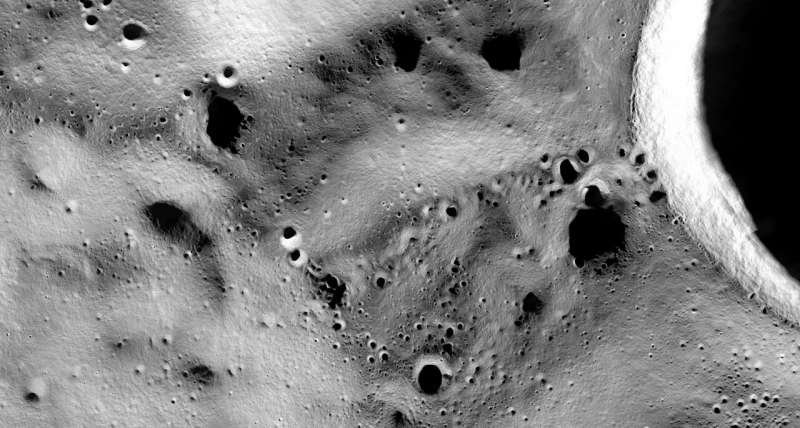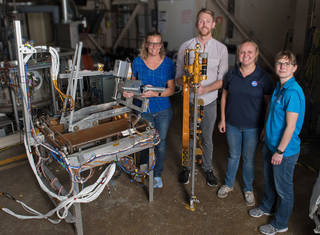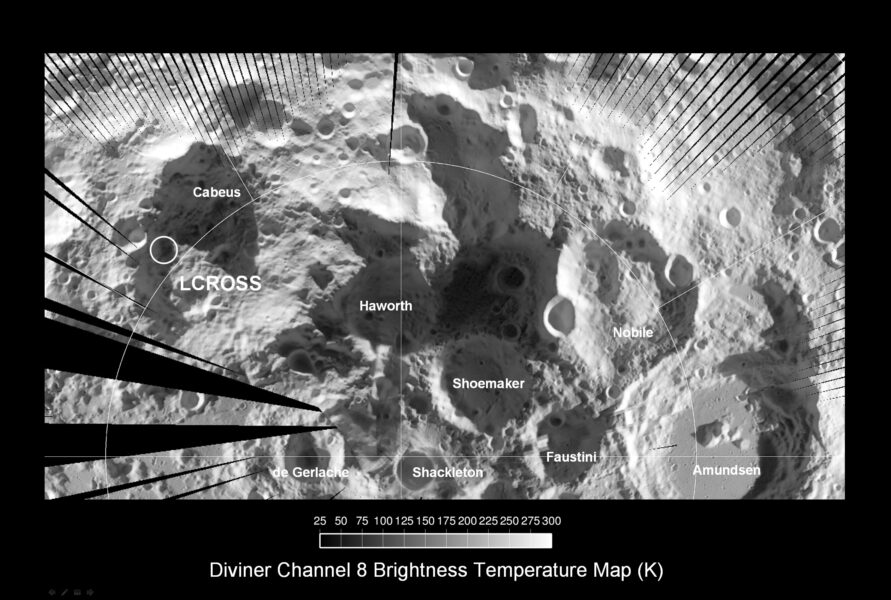17.11.2021
NASA has revealed the landing site for Intuitive Machines’ ambitious drilling mission, set to launch for the Moon in 2022.

The Moon is about to become a busy place. NASA recently announced a landing site for Intuitive Machines’ Nova C lander, near Shackleton Crater in the Moon’s south pole region. The lander will carry NASA’s Polar Resources Ice-Mining Experiment (PRIME 1) mission set for late 2022.
The site is on the “Shackleton connecting ridge,” which connects De Gerlache Crater to Shackleton Crater. The 2020 Lunar Science Surface Workshop highlighted this site as a prime location for finding volatiles and conducting science.

NASA
The south pole site affords enough sunlight for a 10-day mission for the solar-powered lander and its payloads, including its Trident drill. It also offers clear line-of-sight communication with Earth, as well as access to permanently shadowed craters. This access is key, as the craters may possess water-ice deposits.
“PRIME-1 is permanently attached to Intuitive Machines’ Nova-C lander, and finding a landing location where we might discover ice within three feet of the surface was challenging,” says Jackie Quinn (NASA-KSC) in a recent press release. “We needed to find a ‘Goldilocks’ site that gets just enough sunlight to meet mission requirements, while also being a safe place to land with good Earth communications.”
The site selection was based off maps of possible water-ice detections, produced by NASA’s Lunar Prospector in the 1990s. Additional data came from the Lunar Crater Observation Sensing Satellite (LCROSS) impactor mission and India’s Chandrayaan 1 orbiter.
This will be the second Moon mission for the Nova C lander; the first, planned for early 2022, will carry NASA instruments to a nearside spot between Mare Crisium and Mare Serenitatis. The Nova C lander was developed under NASA’s Commercial Lunar Payload Services program. The carrier rocket for both missions will be a SpaceX Falcon 9 rocket.
ONE LANDER, THREE MISSIONS
PRIME 1 is one of three payloads that the Nova C lander will carry. It consists of a spectrometer and a lunar regolith drill, called The Regolith Ice Drill for Exploring New Terrain (Trident). Trident is a meter (three feet) long, built to extract lunar regolith and deposit it on the surface for analysis by a separate instrument, the Mass Spectrometer Observing Lunar Operations instrument (MSolo).

NASA
The lander will also carry a small rover (the Mobile Autonomous Prospecting Platform, or MAPP) developed by the technology company Lunar Outpost. The rover will venture a mile away from the lander and demonstrate a remote 4G/LTE communications network fielded by Nokia Labs. This relay, from rover to lander to Earth, will serve as a proof-of-concept for a powerful, space-hardened network that astronauts could one day use to transmit high-definition video in real time on the lunar surface.

Lunar Outpost
The final payload aboard the lander is the Micro-Nova, a mini-vehicle developed as part of NASA’s Tipping Point program, which encourages new milestone-based technologies. The Micro-Nova will scout permanently shadowed regions while carrying up to 1-kg payload, venturing out 2.4 km from the landing site using thrusters.
The South Pole region of the Moon will get busy in general, as NASA’s VIPER (Volatiles Investigation Polar Exploration Rover) mission will also land at Nobile crater in 2023. Like IM-2, considerations for the landing site were made looking at solar power utilization, line-of-sight communications with Earth, and accessibility to permanently shadowed regions for sampling. IM-2's site is, however, much more ambitious, as it lies less than a degree in latitude from the lunar south pole.

NASA / LRO / Diviner
THE MOON IN 2022
Lunar exploration gets underway in earnest in 2022. No less than 15 lunar missions from 9 countries are planned, some of which will hitch a ride with Astrobotic's Peregrine lunar lander.
Also, watch for the inaugural launch of SLS rocket in February 2022, which will also carry 10 CubeSats, most of them Moonbound. Early next year will also see the launch of the CAPSTONE lunar orbiter, a pathfinder mission for the crewed Lunar Gateway station.
The next few years promise to be exciting ones for lunar exploration.
